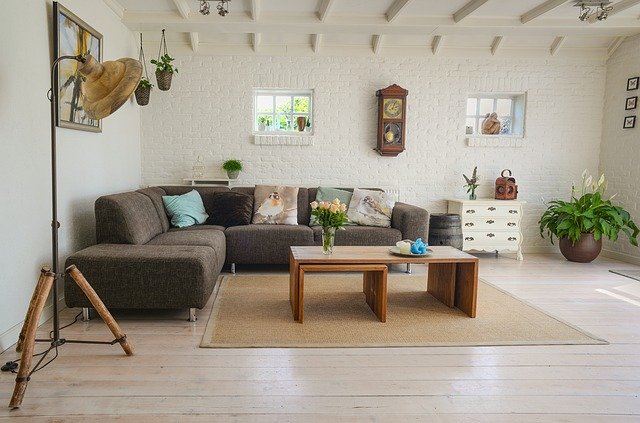INTRODUCTION
Environmental friendly sustainable interior design could be described as the reduction in the utilization of resources that are used during the construction of infrastructure especially homes or buildings. The resources include sustainable materials that have fewer impacts on the environment and human health. Check out We Are Witnessing Climate Change Kill Our World
A clean and green environment not only includes outdoor surroundings but indoors as well. Indoor air quality is as important as outdoor air quality. It is noteworthy to know what kinds of materials are being utilized in home construction. A simple example is VOCs generation from furniture that degraded indoor air quality.
Read: 10 Easy Ways To Store And Use Rainwater In Your House
SUSTAINABLE INTERIOR DESIGN DESIGN TECHNIQUES AND METHODS
Environmental friendly sustainable interior design generally includes furniture, lighting system, renewable energy sources, recycled material, etc. It can be achieved through the following steps.
BUILDING MATERIALS
Building material is an essential component of interior design. Selecting building material that has less environmental impact makes it eco-friendly. Bamboo is an example because it grows faster. Deforestation doesn’t count here for cutting bamboo because it is tall grass. Environmental-friendly “green” concrete is also an option.
FURNITURE – RECYCLED MATERIALS
To decrease dependence on raw materials that need energy for processing, it is favorable to use recycled materials for furniture. Plastic and metals are examples of recycled material. Reusing and recycling “old” furniture is another way to go.
DURABLE ELECTRONIC APPLIANCES
Durability is what makes interior design sustainable. The lifespan of electronic appliances should be evaluated in order to estimate the longevity of the product. Also, buy only essential and limited amount of electronic devices, trust me, you don’t need all those devices. For more information: Dematerialisation – Environmental Sustainability Benefits
ACOUSTIC PANELS FOR SOUNDPROOF SYSTEM
Acoustic panels that are made of natural materials such as bamboo or recycled material such as rubber are good sound absorbents.
WELLNESS
Sustainable interior design involves accurate use of space inside the building and using natural resources such as sunlight for lighting, natural ventilation, etc.
BIOPHILIC DESIGN
Incorporating natural components of the environment for aesthetic beauty is considered sustainable practice for eco-friendly interior design. Vertical gardening is very close to nature and can be used inside or outside the building.
LIGHTING DESIGN
Lighting design is crucial for eco-friendly sustainable interior design. The color of paint is also important for reduced energy consumption. Glass windows serve well for increased sunlight exposure and switching to LED technology for lighting systems is a sustainable option.
Also read: Blueprint of an Eco-city – How To Create Sustainable Cities?
ADVANTAGE OF ENVIRONMENTAL FRIENDLY SUSTAINABLE INTERIOR DESIGNS
There are many advantages of achieving environmentally friendly sustainable interior designs.
1. LESS WASTE GENERATION: In eco-friendly sustainable interior designing less constructional waste is generated and hence it makes waste disposal possible.
2. LESS ENERGY UTILIZATION: By following eco-friendly sustainable interior design, the burden on energy utilization is reduced.
3. FEWER EXPENDITURE COSTS: The most economical advantage of sustainable interior design is fewer expenditure costs for businesses.
4. INCREASED REGULATORY COMPLIANCE: Sustainable interior designs can assist businesses in achieving regulatory compliance.
5. POSITIVE IMAGE OF BRANDS: Brands that promote sustainable materials for interior designing get the trust of customers.
6. ATTRACT INVESTORS: Sustainable practices are key factors that attract investors and in this way increased productivity is achieved.
You might also like: How Can We Make Our Cities Sustainable (An Eco-City)?
CONCLUSION
The human population is increasing and urbanization is having negative impacts on the environment. In such a case, the interior design of a house should be eco-friendly. The compact and congested houses and degraded indoor air quality put emphasis on the importance of environmentally sustainable interior designs. Moreover, a considerable amount of energy is being used during the extraction of raw material or woodcutting. All those resources that use less energy and can be eco-friendly must be utilized for interior designing.
Also check out: All You Need To Know About Carbon Footprint And Its Importance
I hope you all liked this post! Please comment below if you have any suggestions, comments, or feedback! We at #envpk love hearing from our readers! Thanks!




